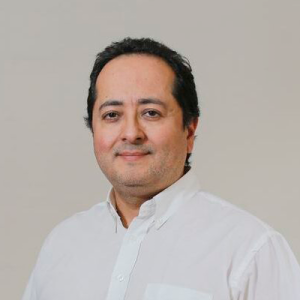Department of Computer Science
Faculty of Communications, Diego Portales University
Portada » An online tool to unmask propaganda on social media

Department of Computer Science
Propaganda no longer needs pamphlets or rallies in the streets. The mass adoption of the internet and social media has multiplied its reach and made it harder to detect, especially when it takes covert forms. Covert propaganda refers to a sequence of messages designed to manipulate people’s opinions that hide their intent and authorship, masquerade as news or objective information, and are disseminated in a coordinated manner to maximize impact without raising suspicion. This camouflage makes it easier for such content to slip into the everyday stream of posts and, fueled by emotions like fear or anger, lower our cognitive defenses and go viral. The rise of artificial intelligence has intensified the phenomenon, mass-producing believable text and further blurring the line between authentic and synthetic.
In this context, a team led by Marcelo Mendoza, a professor at UC’s School of Engineering, is working on a project that can help the public read with a more critical lens. To that end, they are developing two complementary tools: one to identify covert propaganda in texts posted on social media, and another to measure the impact of those messages on the behavior of their recipients. The goal is not to censor or decide for people, but to make visible what often goes unnoticed, yet ends up indirectly shaping our opinions and/or actions.
Tool for identifying propaganda and understanding how it operates
The tool identifies passages of propaganda and labels the underlying techniques, for example fear appeals or discrediting an opponent, drawing from a set of twenty techniques. Initial training data came from news sources and Instagram/Facebook comments containing these patterns. Because most of the material was in English and some strategies appeared far more often than others, the dataset had to be expanded and balanced.
To achieve this, the team used generative AI, models that can synthesize new text from prior examples, like rewriting a paragraph in different words or translating it into another language. In this project, they used ChatGPT to translate texts into Spanish and to generate paraphrases that broadened data diversity. Every output was human-reviewed before training to ensure quality and mitigate bias.
The biggest challenge in this process was refining the instruction given to the AI so that it did exactly what the researchers needed. They used a strategy called “prompt tuning,” in which the desired output is first defined and then the instruction is iteratively adjusted until GPT is able to deliver it precisely.
With the expanded database, the researchers are now training and fine-tuning the tool. The goal is to launch a free public interface where users can enter any text, and the algorithm will highlight the segments containing propaganda and identify which strategy is being used: opponent discrediting, fear appeal, or any of the twenty techniques incorporated into the model.
Examples of texts where propaganda is detected, with labels indicating the specific techniques employed.
Tool to identify how propaganda influences behavior on social media
This second tool seeks to understand how propaganda influences user behavior on social media. The researchers focused on a central question: Can propaganda spread by contagion? In other words, do users replicate the persuasive techniques they read? For example, if a post employs a “fear appeal,” will users respond with messages that also reflect a “fear appeal”?
To explore this contagion, , the team classifies account behavior based on historical activity and message tone, defining four principal profiles:
These categories are not mutually exclusive: a single account may display traits from more than one profile. The classification is based on posting history and the tone maintained over time.
Using this taxonomy, the model evaluates coordination patterns. If a significant number of comments repeat the same propaganda technique and come mainly from automated accounts or those with explicit partisanship, the likelihood of a coordinated campaign increase.
Department of Computer Science
Faculty of Communications, Diego Portales University

Department of Computer Science
The team is currently applying both tools to content published in the lead-up to Chile’s 2025 presidential elections. The analysis covers content from META platforms as well as news articles and their comment sections in the national press. This work will help refine the models and provide evidence on how campaigns operate at a critical democratic moment.
The premise guiding the project is clear: unveiling campaigns is the best way to confront them. By exposing how they operate, audiences become aware of the frequency and everyday nature of such content and strengthen their critical judgment to view what circulates on social media with greater skepticism.